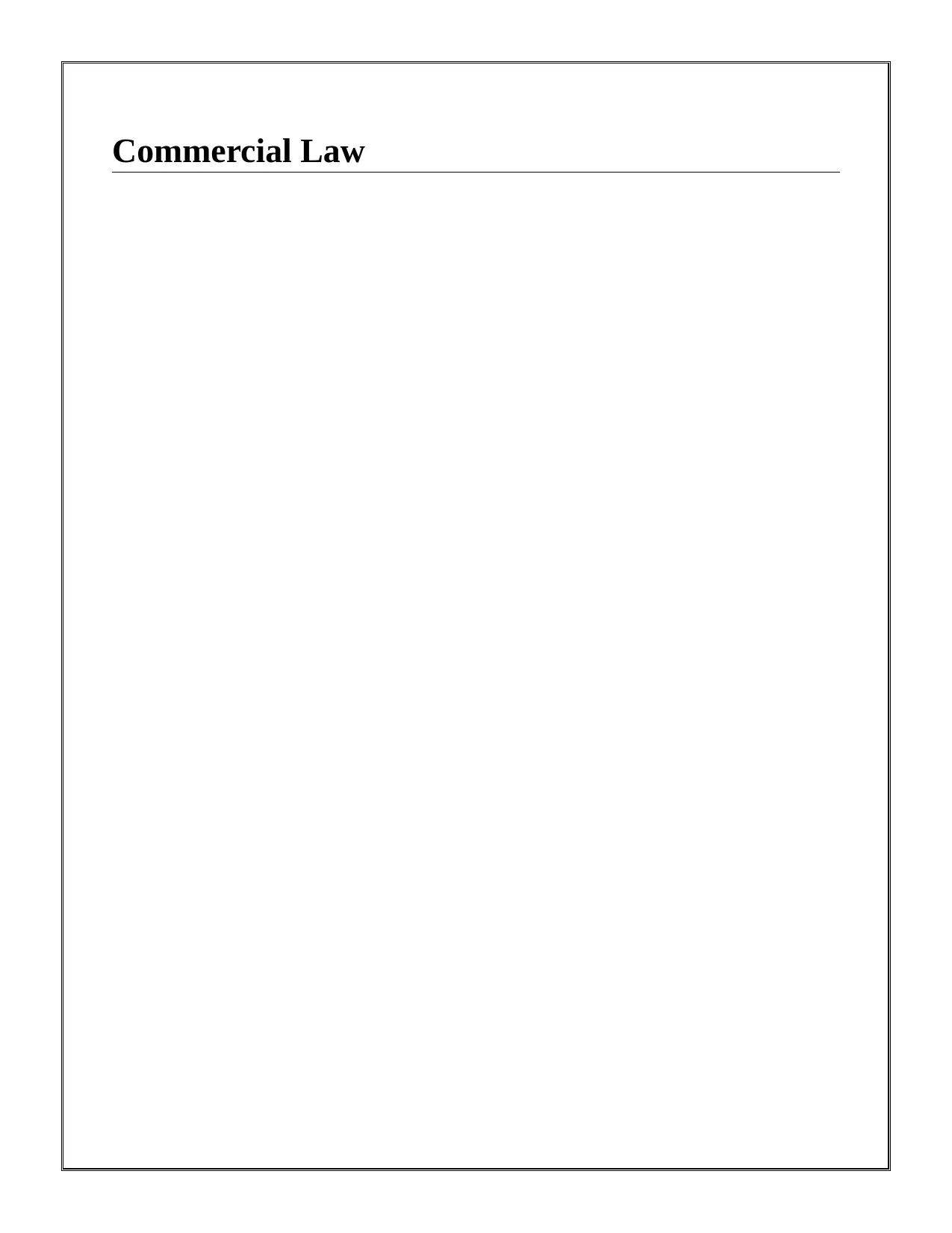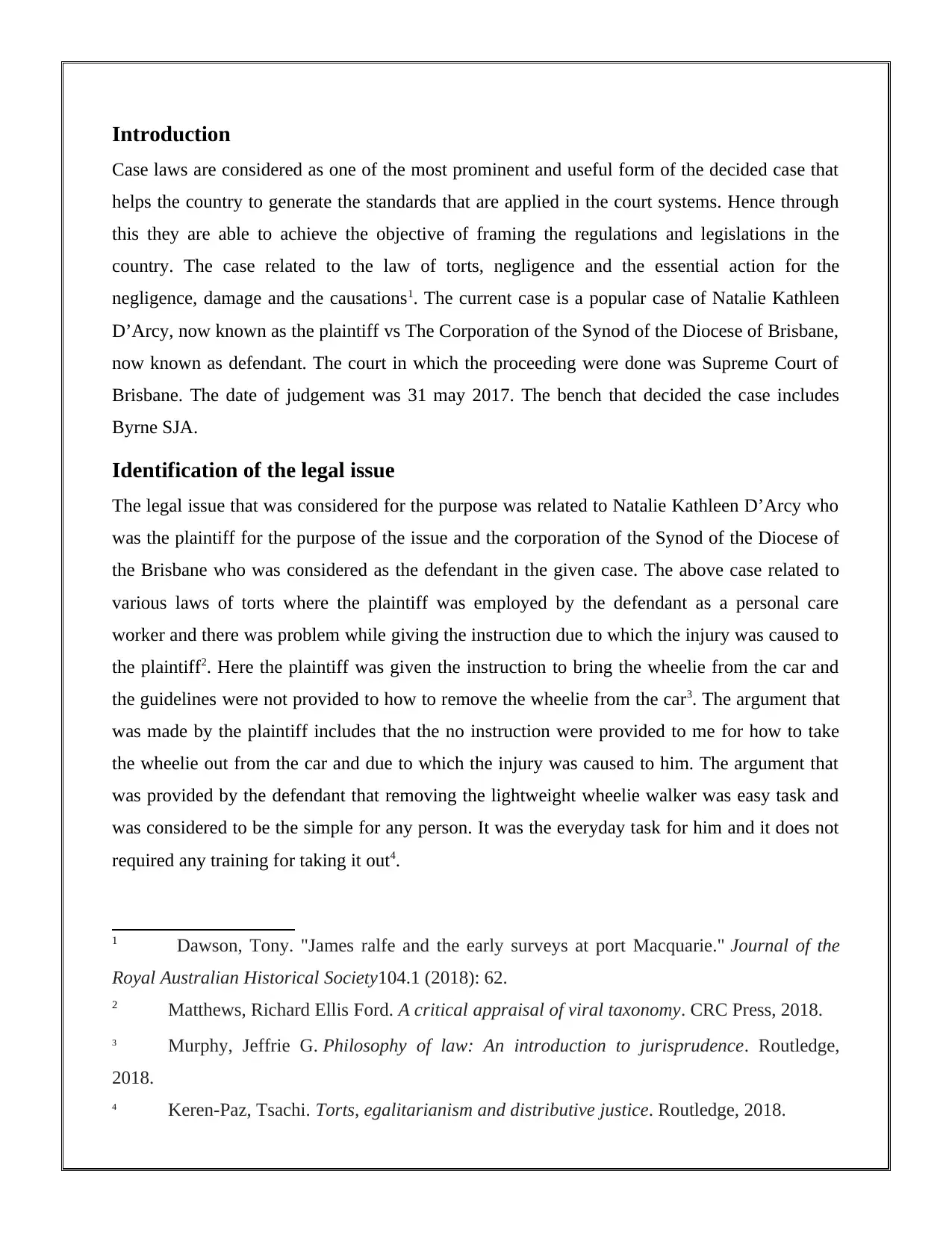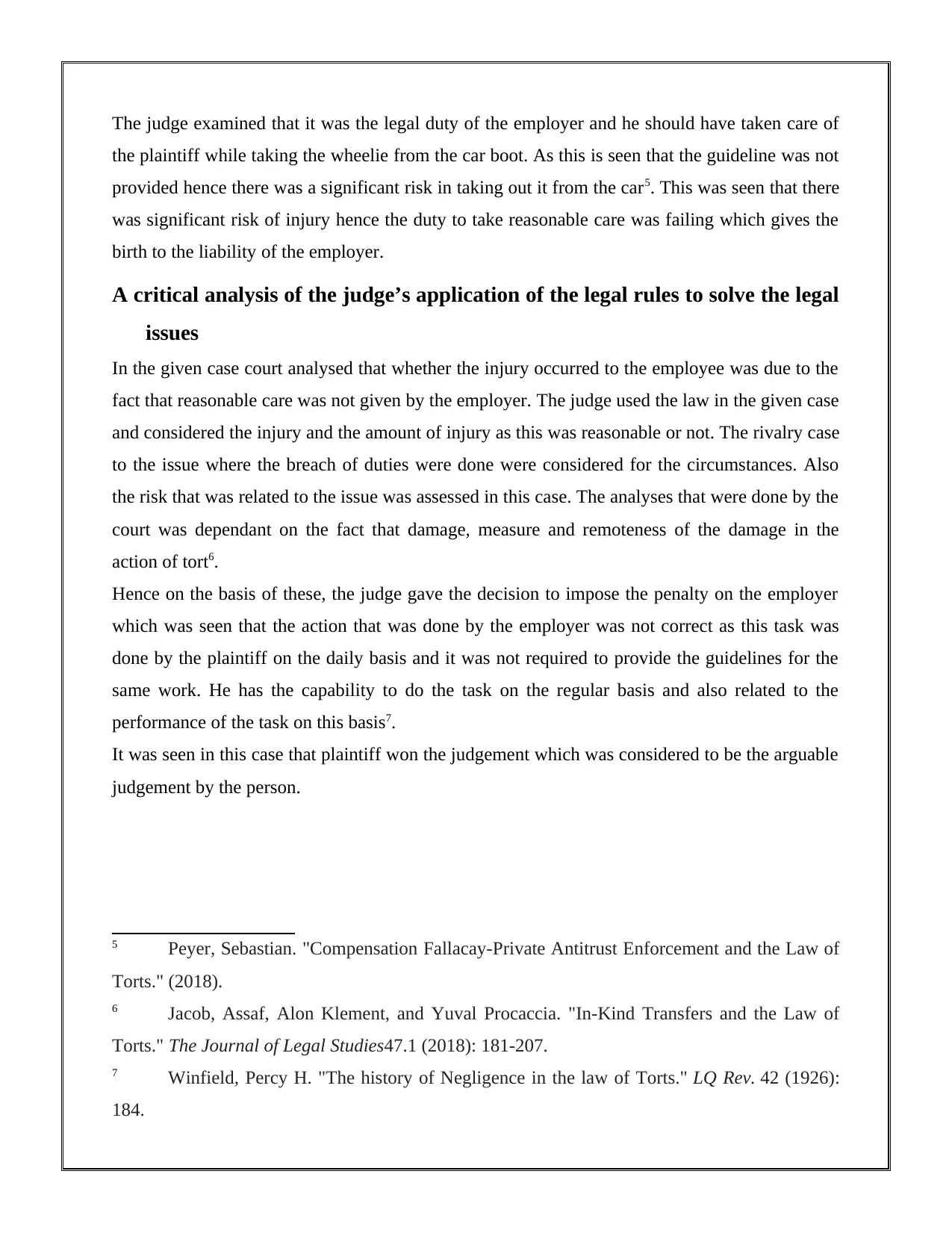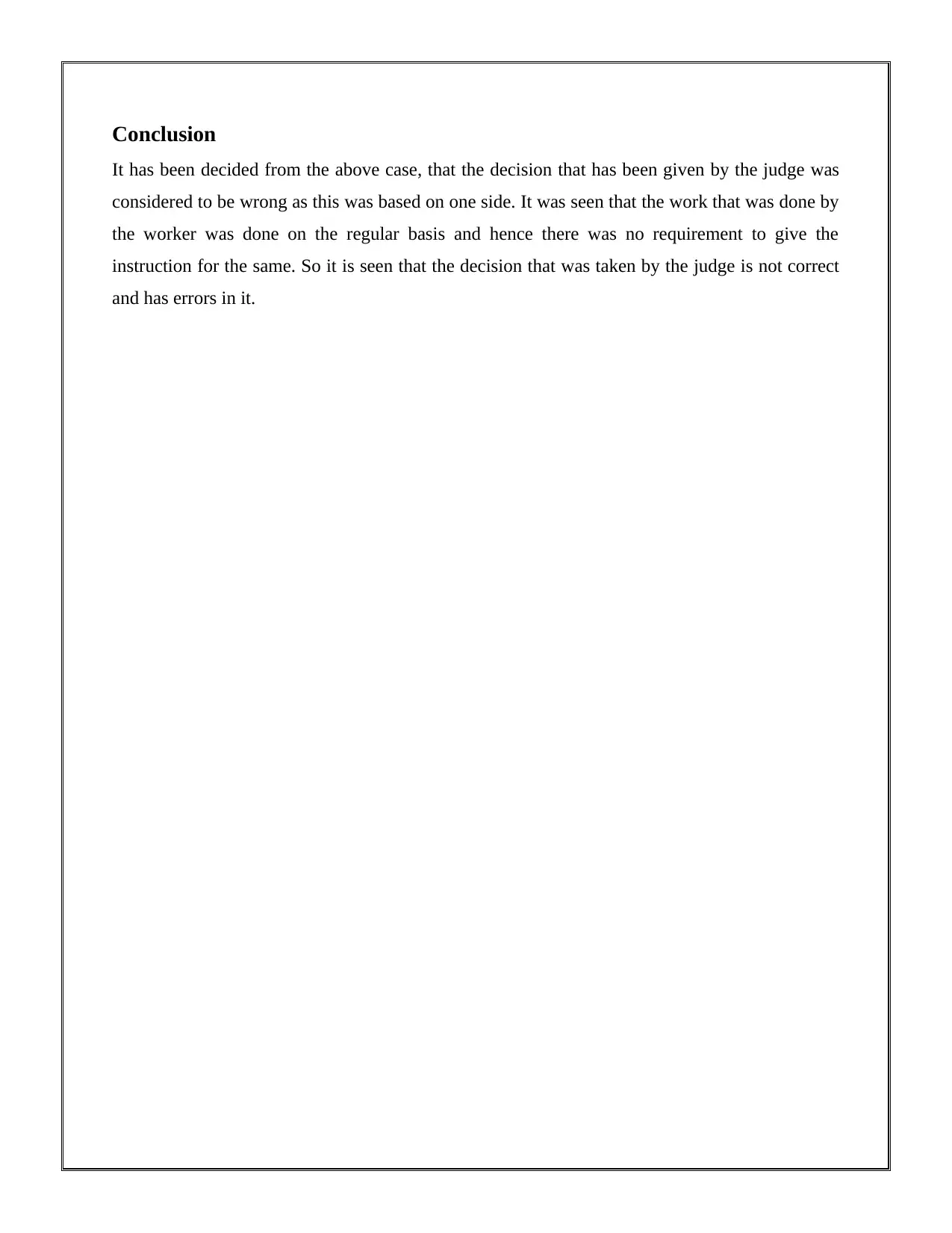LAW2447 Case Note: Commercial Law Analysis of D'Arcy v. Brisbane Synod
VerifiedAdded on 2022/11/23
|4
|978
|214
Case Study
AI Summary
This case note analyzes the commercial law case of Natalie Kathleen D'Arcy versus The Corporation of the Synod of the Diocese of Brisbane, decided by the Supreme Court of Brisbane on May 31, 2017. The case revolves around issues of tort law, specifically negligence, arising from an injury sustained by the plaintiff while employed as a personal care worker. The plaintiff claimed the defendant failed to provide adequate instructions for a task, leading to injury. The analysis examines the legal issue, the arguments presented by both sides, and the judge's application of legal rules, including the determination of duty of care and breach of duty. The note critically assesses the judge's decision, concluding that the decision was arguable and potentially flawed. The case highlights the importance of employers providing clear instructions and ensuring a safe working environment, while also considering the employee's prior experience and the reasonableness of the task. The case note provides a detailed examination of the legal principles involved and the court's reasoning.
1 out of 4











![[object Object]](/_next/static/media/star-bottom.7253800d.svg)